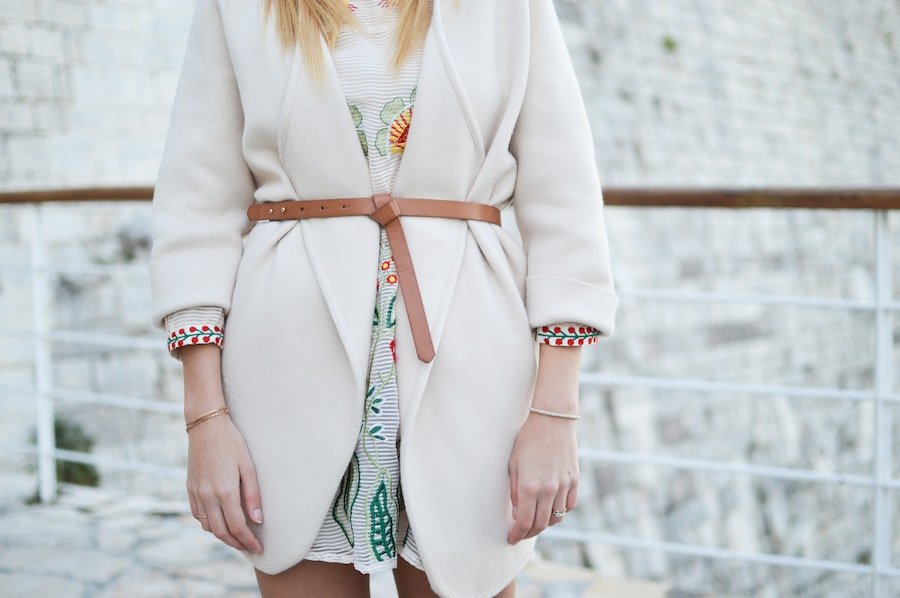

The Language of Norwegian Fashion: Norwegian Vocabulary for Shopping and Styles
Norway may not be the first country that comes to mind when thinking about fashion, but it has a thriving fashion industry and a unique shopping culture. Fashion and style are highly valued in Norwegian society, with many Norwegians taking pride in their appearance and dressing well. The fashion industry in Norway is constantly evolving, with new designers and brands emerging on the scene. Shopping is also an important part of Norwegian culture, with a wide range of stores and boutiques to choose from.
Table of Contents
ToggleKey Takeaways
- Norwegian fashion is heavily influenced by the country’s natural surroundings and outdoor lifestyle.
- Basic Norwegian vocabulary for shopping and fashion includes words for sizes, colors, and materials.
- Norwegian clothing sizes are typically based on height and measurements are in centimeters.
- Popular Norwegian fashion brands and designers include Holzweiler, Moods of Norway, and Tom Wood.
- Norwegian street style is often characterized by functional and minimalist clothing with a focus on sustainability.
Basic Norwegian Vocabulary for Shopping and Fashion
If you’re planning to go shopping in Norway or simply want to talk about fashion in Norwegian, it’s helpful to know some basic vocabulary. Here are a few common words and phrases related to shopping and fashion:
– Klær (clothes)
– Sko (shoes)
– Veske (bag)
– Kjole (dress)
– Bukse (pants)
– Skjorte (shirt)
– Jakke (jacket)
– Størrelse (size)
– Pris (price)
– Salg (sale)
Pronunciation in Norwegian can be a bit tricky for non-native speakers, but here are a few tips to help you out. The letter “ø” is pronounced like the “u” in “hurt,” while the letter “å” is pronounced like the “o” in “dog.” The letter “j” is pronounced like the “y” in “yes,” and the letter “g” is pronounced like the “g” in “go.”
Understanding Norwegian Clothing Sizes and Measurements
When it comes to clothing sizes and measurements, Norway uses a different system than many other countries. In Norway, clothing sizes are based on centimeters rather than traditional small, medium, large sizing. This can make it a bit confusing for international shoppers, but there are conversion charts available online to help you find the right size.
To convert Norwegian clothing sizes to international sizes, you can use the following guidelines:
– For women’s clothing, subtract 30 from the Norwegian size to get the European size. For example, a Norwegian size 38 would be a European size 8.
– For men’s clothing, subtract 10 from the Norwegian size to get the European size. For example, a Norwegian size 50 would be a European size 40.
It’s also important to note that Norwegian clothing tends to run on the larger side compared to other countries. So if you’re used to wearing a certain size in your home country, you may need to go down a size when shopping in Norway.
Popular Norwegian Fashion Brands and Designers
Norway is home to several well-known fashion brands and designers who have made a name for themselves both domestically and internationally. One of the most famous Norwegian fashion brands is Moods of Norway, known for its colorful and playful designs. Their signature style includes bold patterns, bright colors, and quirky details. Another popular brand is Holzweiler, which specializes in high-quality knitwear and accessories. Their designs are characterized by clean lines, neutral colors, and a minimalist aesthetic.
In addition to these brands, there are also many up-and-coming designers making waves in the Norwegian fashion scene. One such designer is Edda Gimnes, known for her whimsical and artistic approach to fashion. Her designs often feature hand-drawn illustrations and bold prints. Another notable designer is Michael Olestad, who creates avant-garde and experimental pieces that push the boundaries of traditional fashion.
Norwegian Street Style: Trends and Influences
Norwegian street style is known for its casual yet chic aesthetic. Norwegians have a knack for effortlessly combining comfort and style, often opting for simple and understated outfits with a few statement pieces. Neutral colors such as black, white, and gray are popular choices, but pops of color are also seen, especially during the summer months.
In terms of trends, sustainability and eco-friendly fashion have become increasingly important in Norway. Many Norwegians are conscious of the environmental impact of the fashion industry and are opting for ethical and sustainable brands. Minimalism is also a key trend in Norwegian street style, with clean lines and simple silhouettes taking center stage.
Norwegian fashion is influenced by a variety of factors, including other Scandinavian countries, as well as international trends. The minimalist and functional designs of Swedish and Danish fashion have had a significant impact on Norwegian style. Additionally, street style from cities like Paris, London, and New York also influences Norwegian fashion, with Norwegians often putting their own unique twist on global trends.
Traditional Norwegian Fashion: Bunads and Folk Costumes

When it comes to traditional Norwegian fashion, bunads and folk costumes are the most iconic and recognizable styles. Bunads are traditional Norwegian costumes that vary by region and are worn for special occasions such as weddings, confirmations, and national holidays. Each bunad is unique to its region and is often made by hand using traditional techniques.
Bunads are typically made from wool or silk and feature intricate embroidery and embellishments. They are often accessorized with silver jewelry, including brooches, rings, and necklaces. The colors and patterns of bunads vary depending on the region, with some featuring vibrant floral motifs while others have more subdued colors.
In addition to bunads, there are also other types of folk costumes worn in Norway. These costumes are typically simpler in design compared to bunads but still reflect the regional traditions and heritage of Norway. Folk costumes are often worn for folk dances and other cultural events.
Sustainable Fashion in Norway: Ethical and Eco-Friendly Brands
Sustainable fashion has gained significant traction in Norway in recent years, with many Norwegians prioritizing ethical and eco-friendly brands. There are several Norwegian brands that are leading the way in sustainable fashion, offering high-quality and environmentally conscious clothing.
One such brand is Norwegian Rain, which specializes in outerwear made from recycled materials. Their jackets are not only stylish but also waterproof and windproof, making them perfect for Norway’s unpredictable weather. Another brand to look out for is Tom Wood, known for its sustainable jewelry made from recycled silver and gold.
In addition to these brands, there are also several eco-friendly boutiques and stores in Norway that offer a curated selection of sustainable fashion. These stores often carry a range of brands that prioritize ethical production practices and use sustainable materials.
Fashionable Norwegian Accessories: Jewelry, Bags, and Shoes
Norwegian fashion isn’t just about clothing – accessories play a key role as well. Norwegian designers are known for their unique and innovative approach to accessories, often incorporating traditional materials and techniques into their designs.
When it comes to jewelry, Norwegian designers often draw inspiration from nature and the country’s rich cultural heritage. Brands like Bjørg and Tom Wood create stunning pieces that combine traditional craftsmanship with contemporary design. These brands often use materials such as silver, gold, and precious stones to create one-of-a-kind pieces.
In terms of bags, Norwegian brand Cala & Jade is known for its high-quality leather bags that are both stylish and functional. Their designs are characterized by clean lines and minimalistic details. Another popular brand is Mardou & Dean, which offers a range of leather bags in various shapes and sizes.
When it comes to shoes, Norwegian brand Swims is a standout. They specialize in waterproof shoes that are perfect for Norway’s rainy climate. Their designs are sleek and modern, with options for both men and women.
Dressing for the Norwegian Climate: Winter and Summer Fashion
Norway’s climate can be quite challenging, with cold winters and mild summers. When it comes to dressing for the Norwegian climate, layering is key. In the winter, it’s important to have a good quality winter coat that is warm and waterproof. Layering sweaters and thermal undergarments is also essential to stay warm.
For summer, lightweight and breathable fabrics are a must. Norwegians often opt for linen or cotton clothing that allows for airflow and keeps them cool in the warmer months. It’s also a good idea to have a light jacket or sweater on hand, as the weather can be unpredictable.
In terms of footwear, waterproof shoes are a must-have in Norway. Rain and snow are common throughout the year, so having shoes that can withstand wet conditions is important. Boots with good traction are also recommended for navigating icy sidewalks in the winter.
Shopping in Norway: Tips for Finding the Best Deals and Hidden Gems
Shopping in Norway can be a fun and rewarding experience, but it’s important to know where to look for the best deals and hidden gems. Oslo, Norway’s capital city, is home to a wide range of stores and boutiques, offering everything from high-end designer brands to vintage finds.
One of the best areas for shopping in Oslo is Karl Johans gate, the city’s main shopping street. Here you’ll find a mix of international brands, department stores, and local boutiques. For those looking for high-end designer brands, Aker Brygge is the place to go. This waterfront area is home to luxury stores such as Louis Vuitton and Gucci.
If you’re looking for unique and one-of-a-kind pieces, exploring the city’s vintage and second-hand stores is a must. Stores like Fretex and UFF offer a wide range of pre-loved clothing at affordable prices. You never know what hidden gems you might find!
When it comes to finding the best deals, keep an eye out for sales and discounts. Many stores in Norway have seasonal sales where you can find great deals on clothing and accessories. It’s also worth checking out outlet stores, which offer discounted prices on designer brands.
Navigating Norwegian shopping culture can be a bit different from what you’re used to. Norwegians tend to value quality over quantity and are willing to invest in well-made pieces that will last. They also prioritize sustainable and ethical fashion, so it’s worth considering these factors when shopping in Norway.
Norwegian fashion and shopping culture may not be as well-known as some other countries, but it is definitely worth exploring. From the thriving fashion industry to the unique shopping experiences, Norway has a lot to offer for fashion enthusiasts. Whether you’re interested in sustainable fashion, traditional Norwegian costumes, or simply want to update your wardrobe with some Scandinavian style, Norway has something for everyone. So next time you find yourself in Norway, be sure to check out the local fashion scene and discover the hidden gems of Norwegian fashion.
If you want to learn Norwegian, you can register for classes here. We look forward to hearing from you and helping you become fluent in Norwegian.





